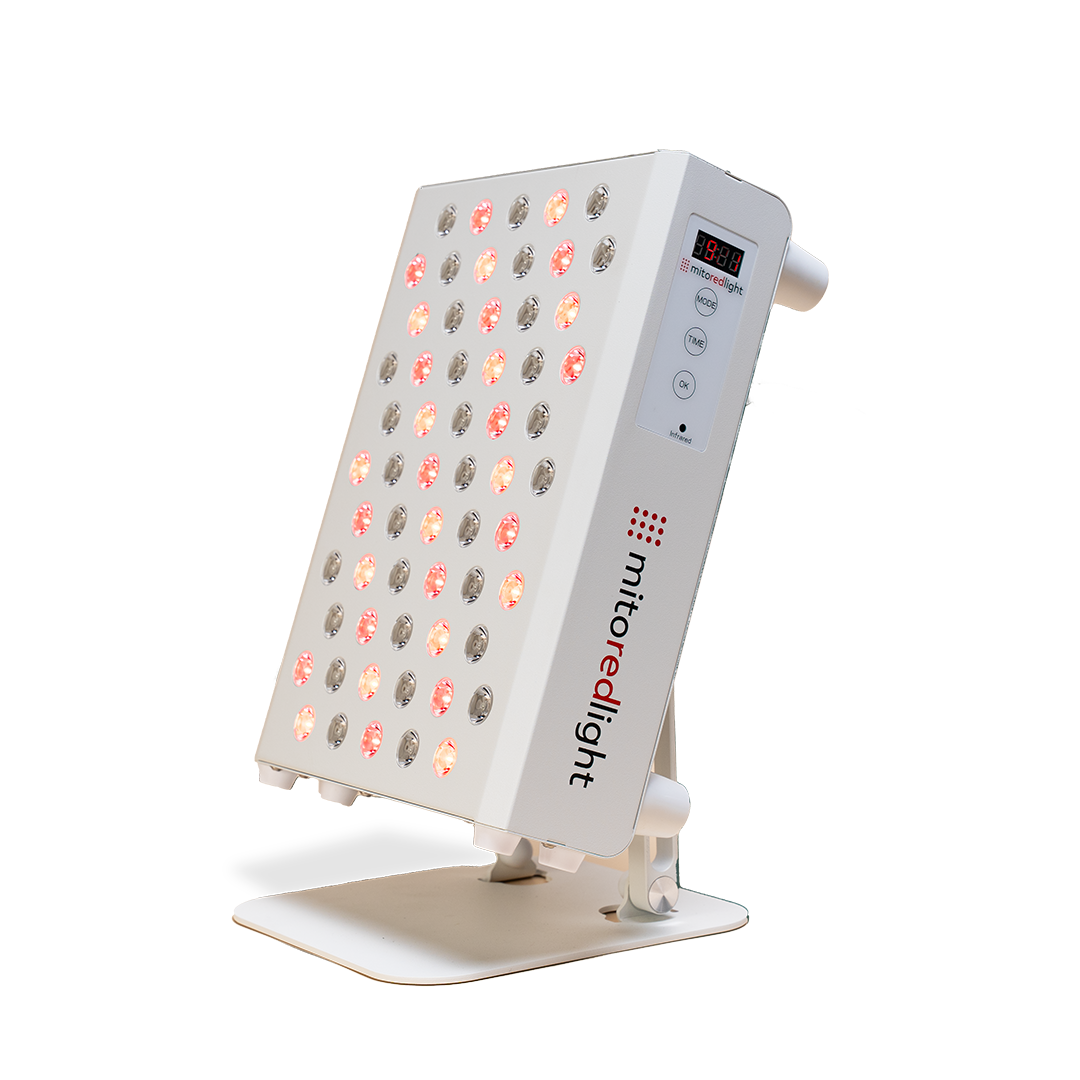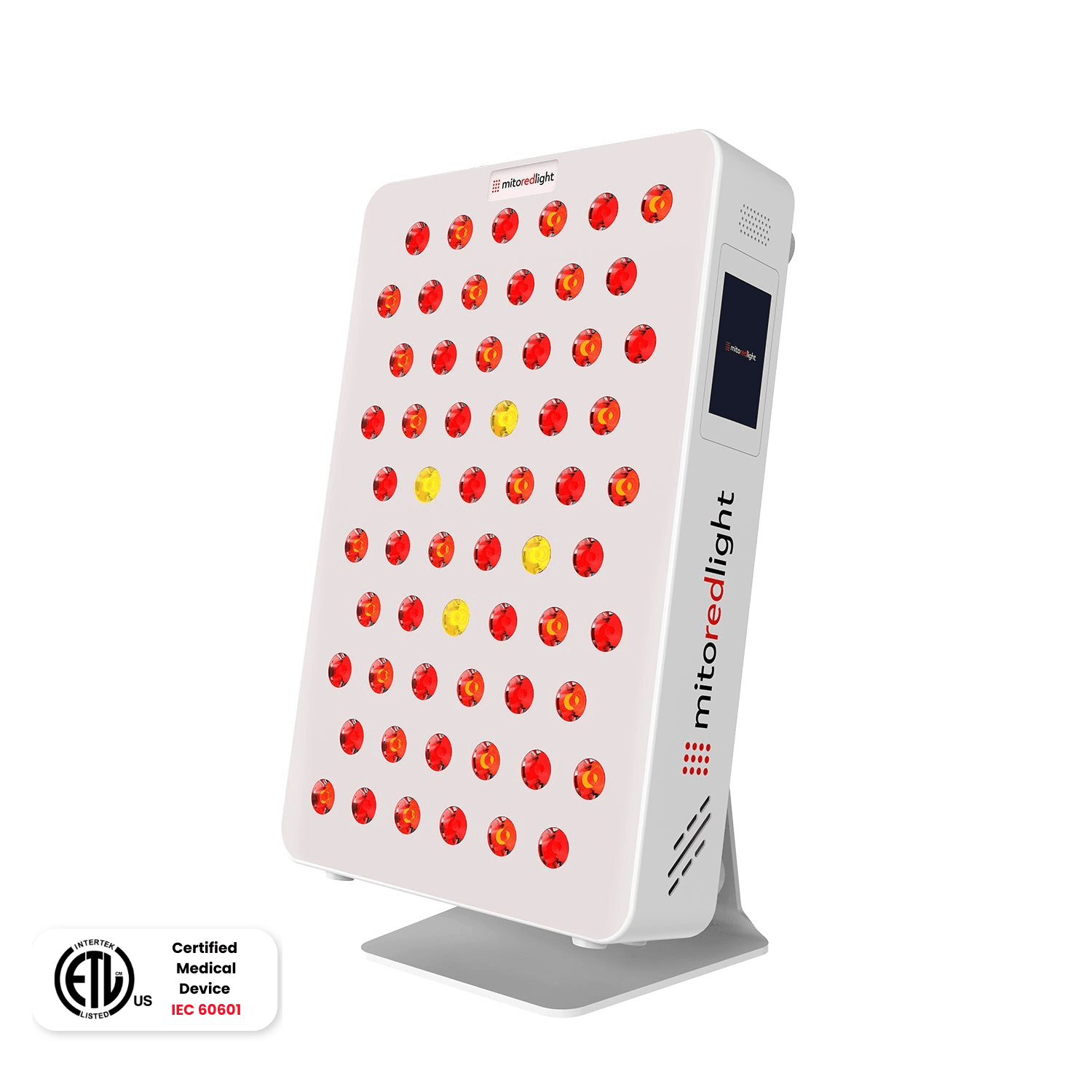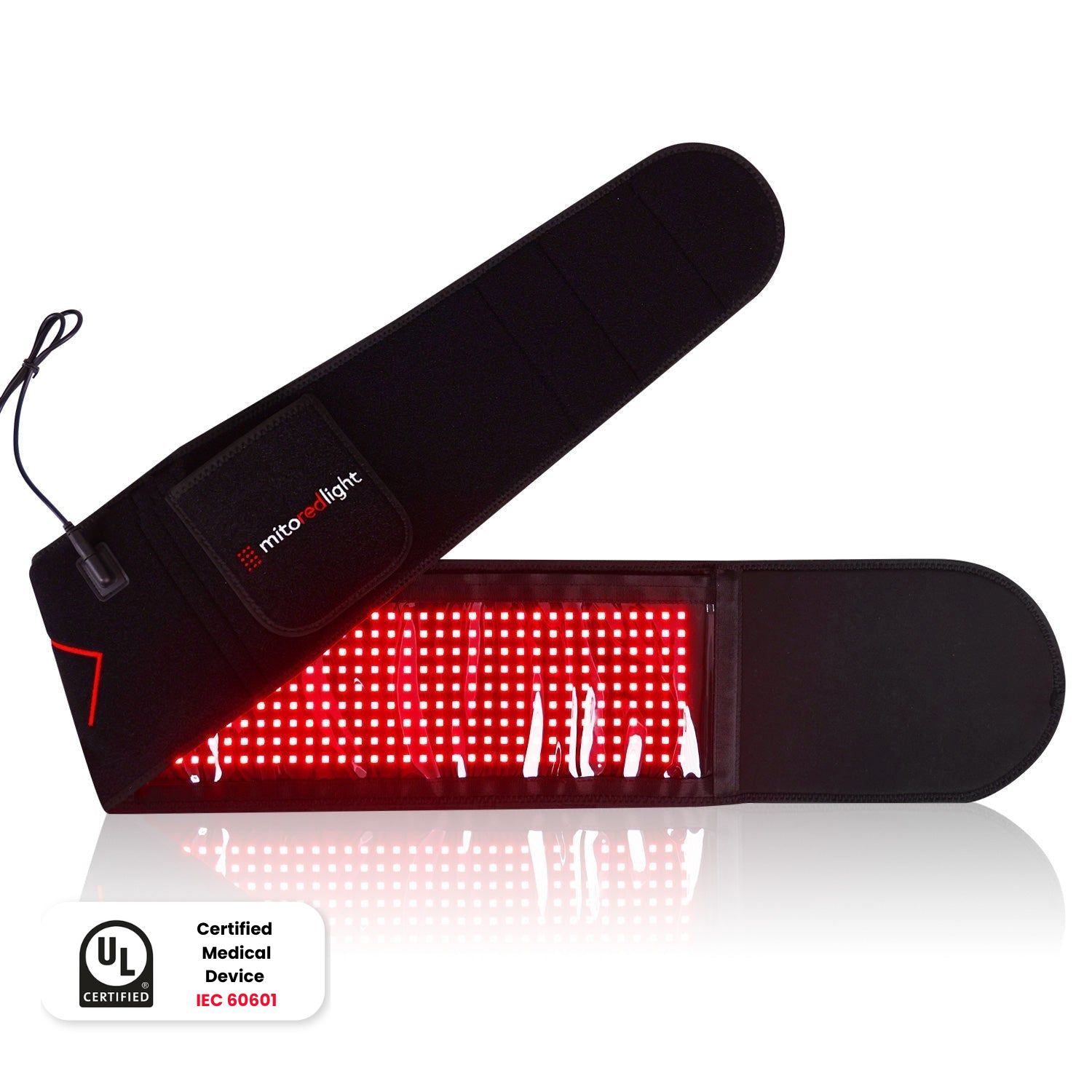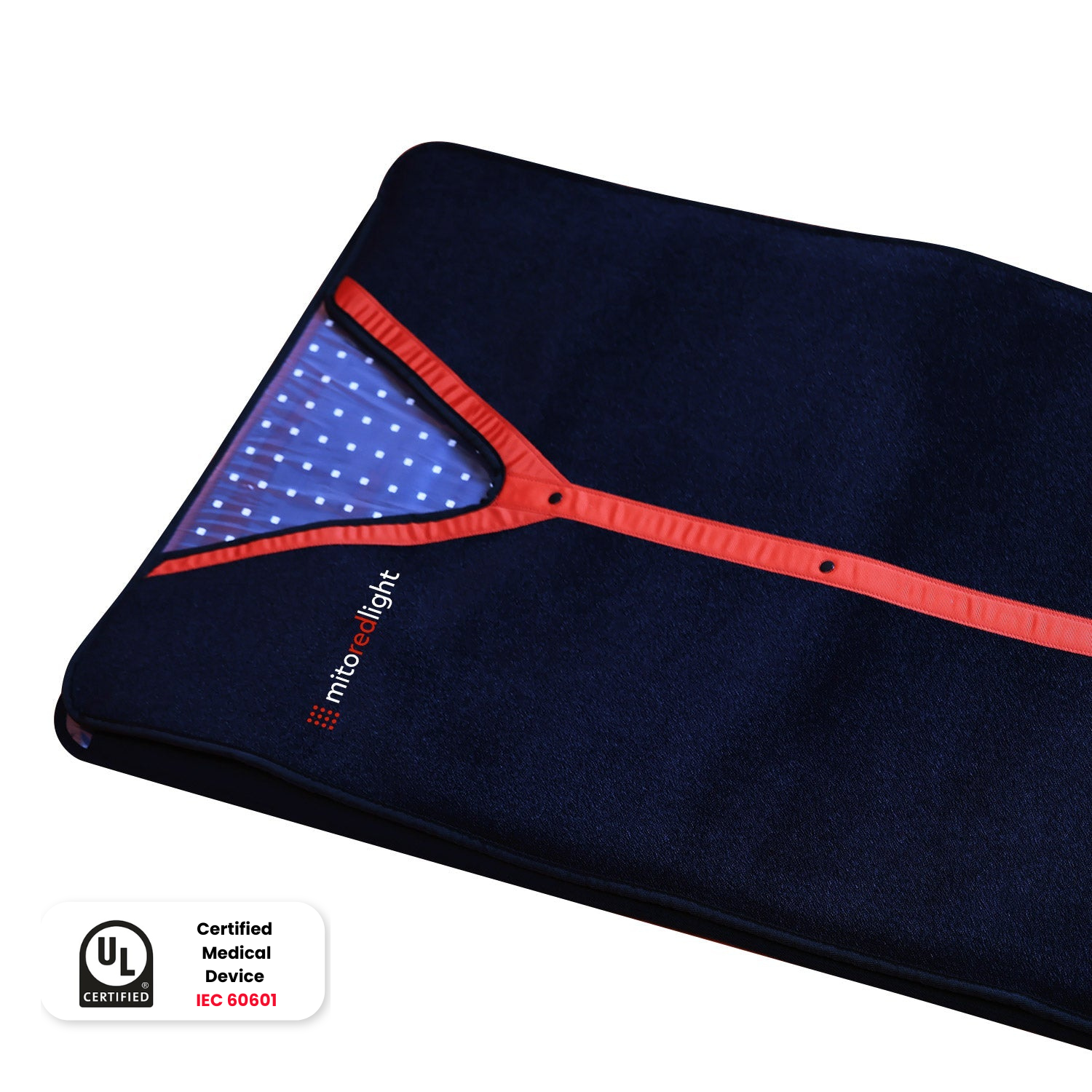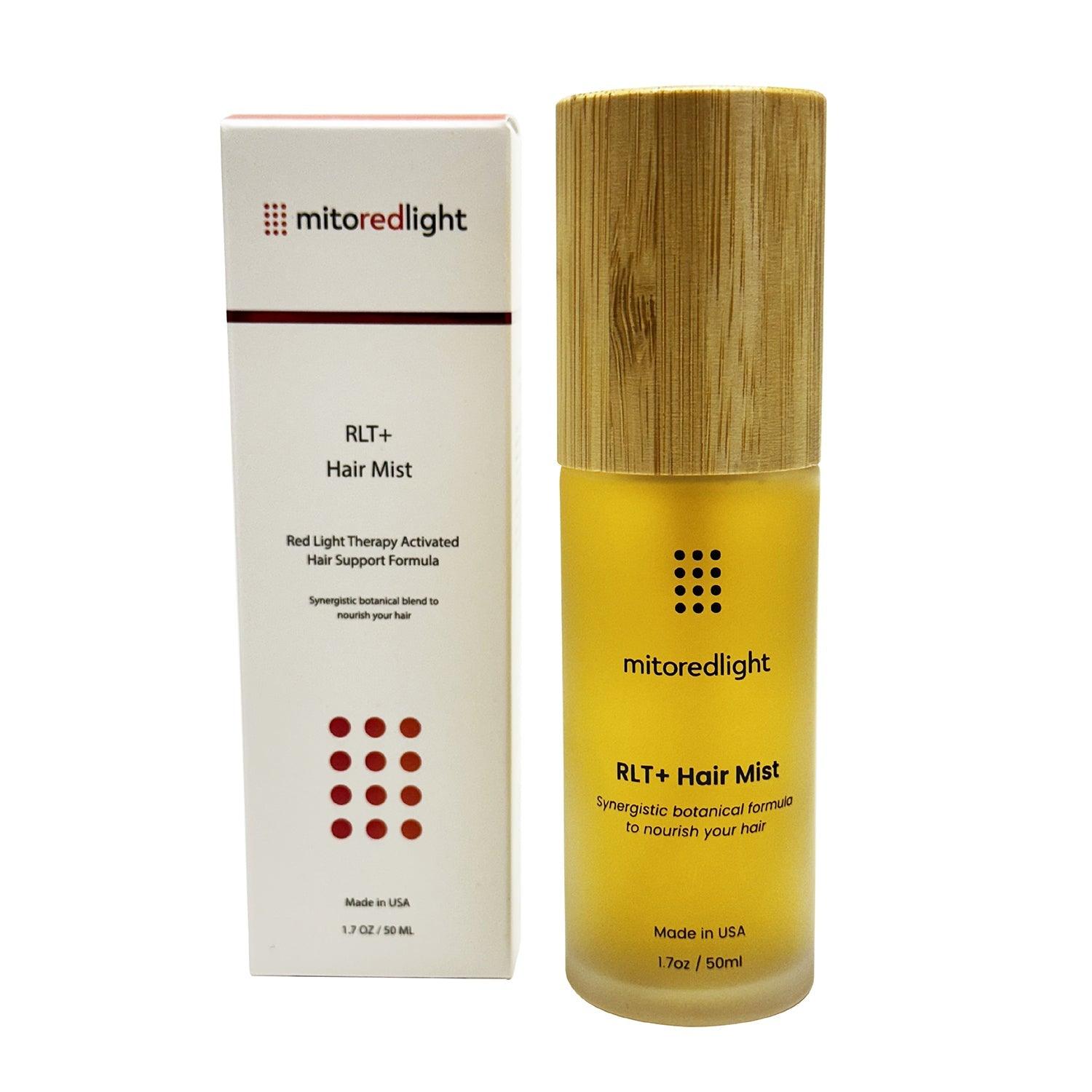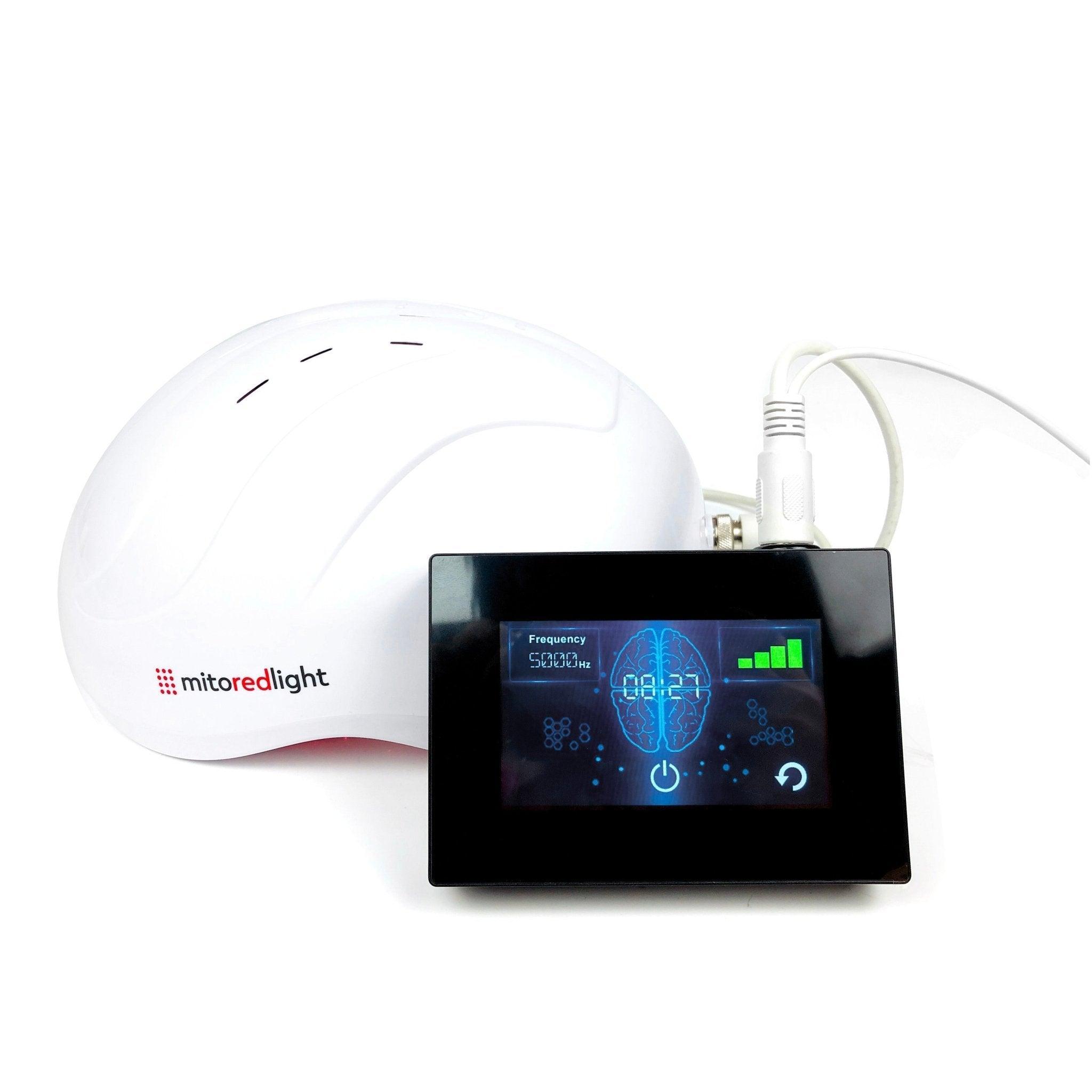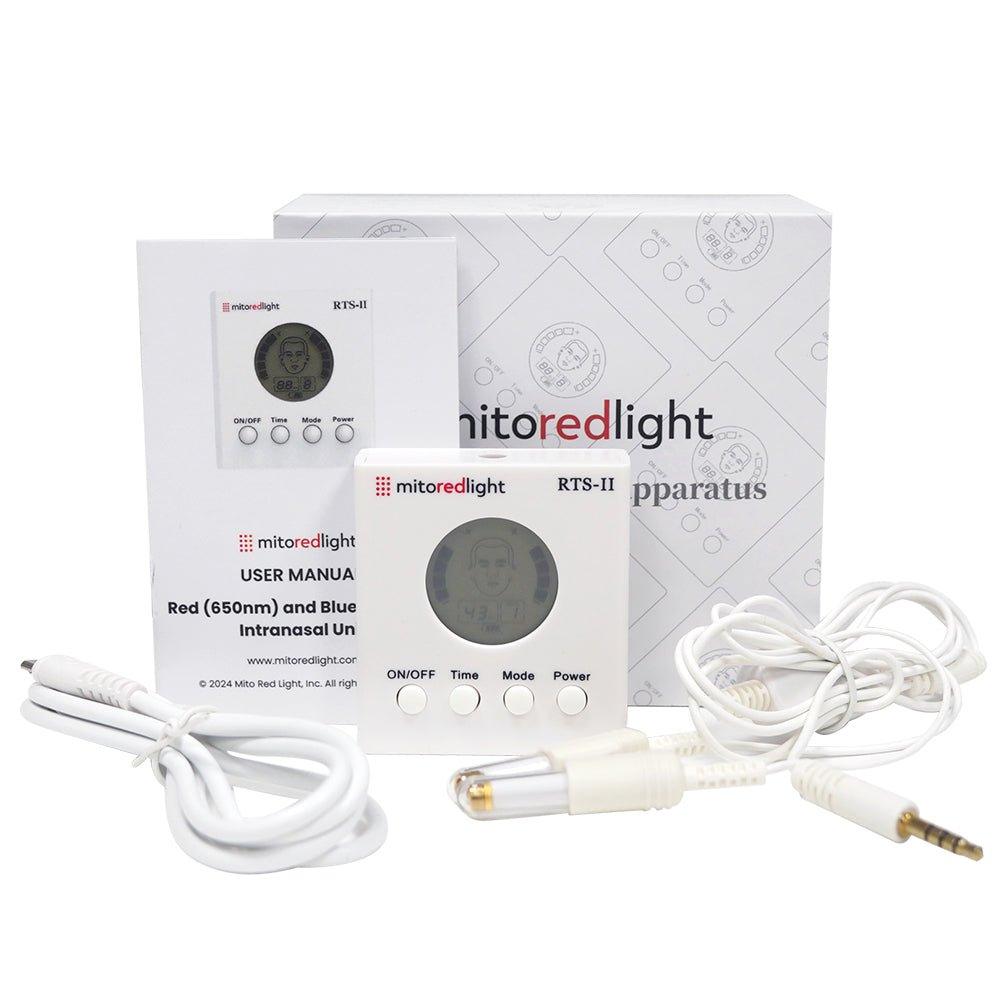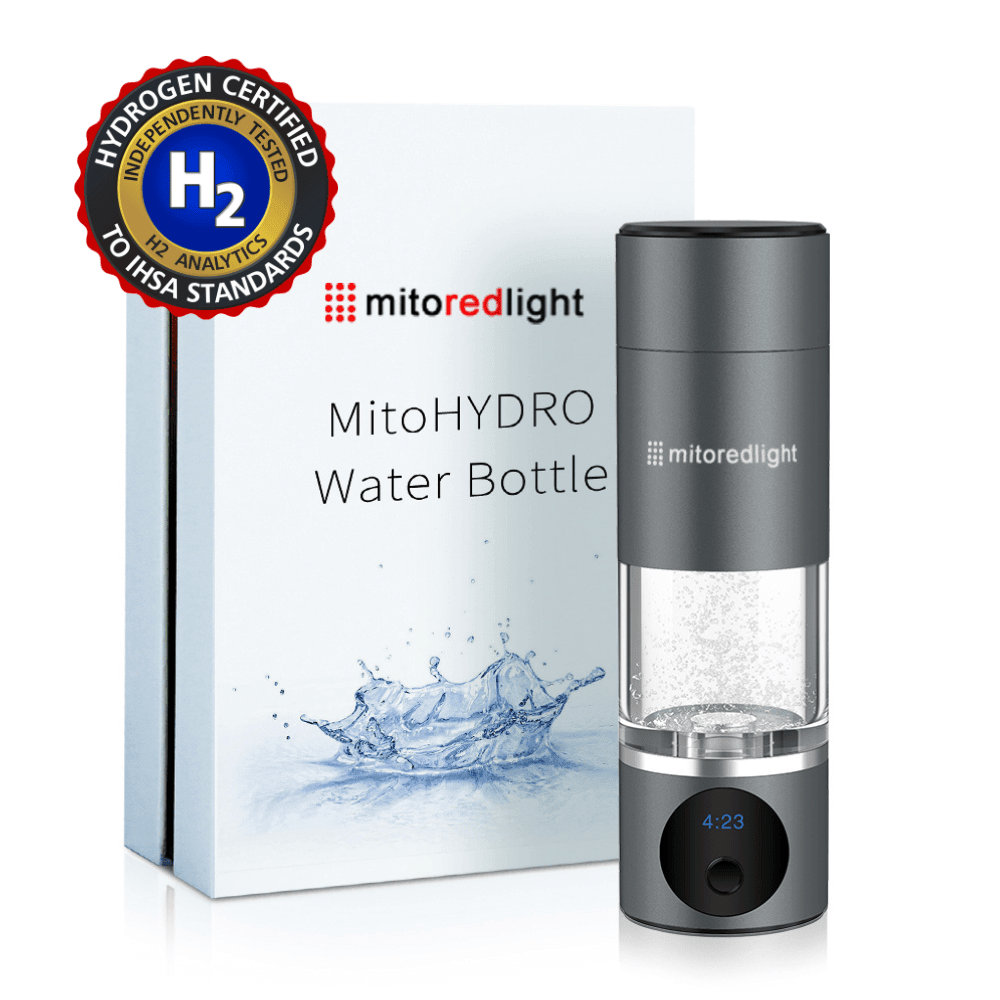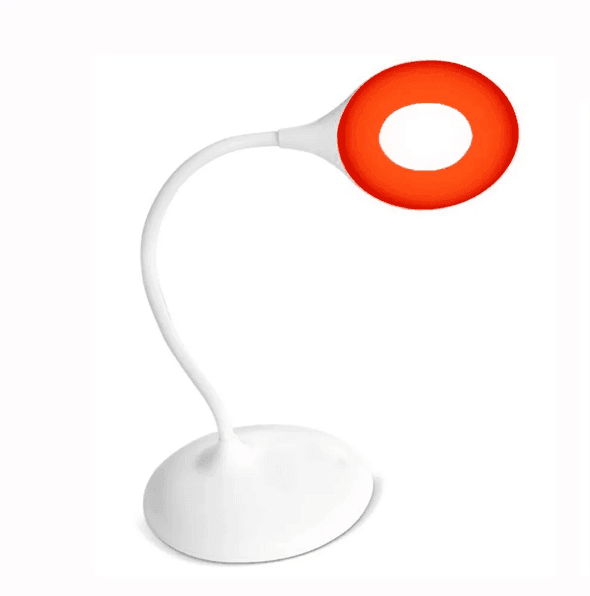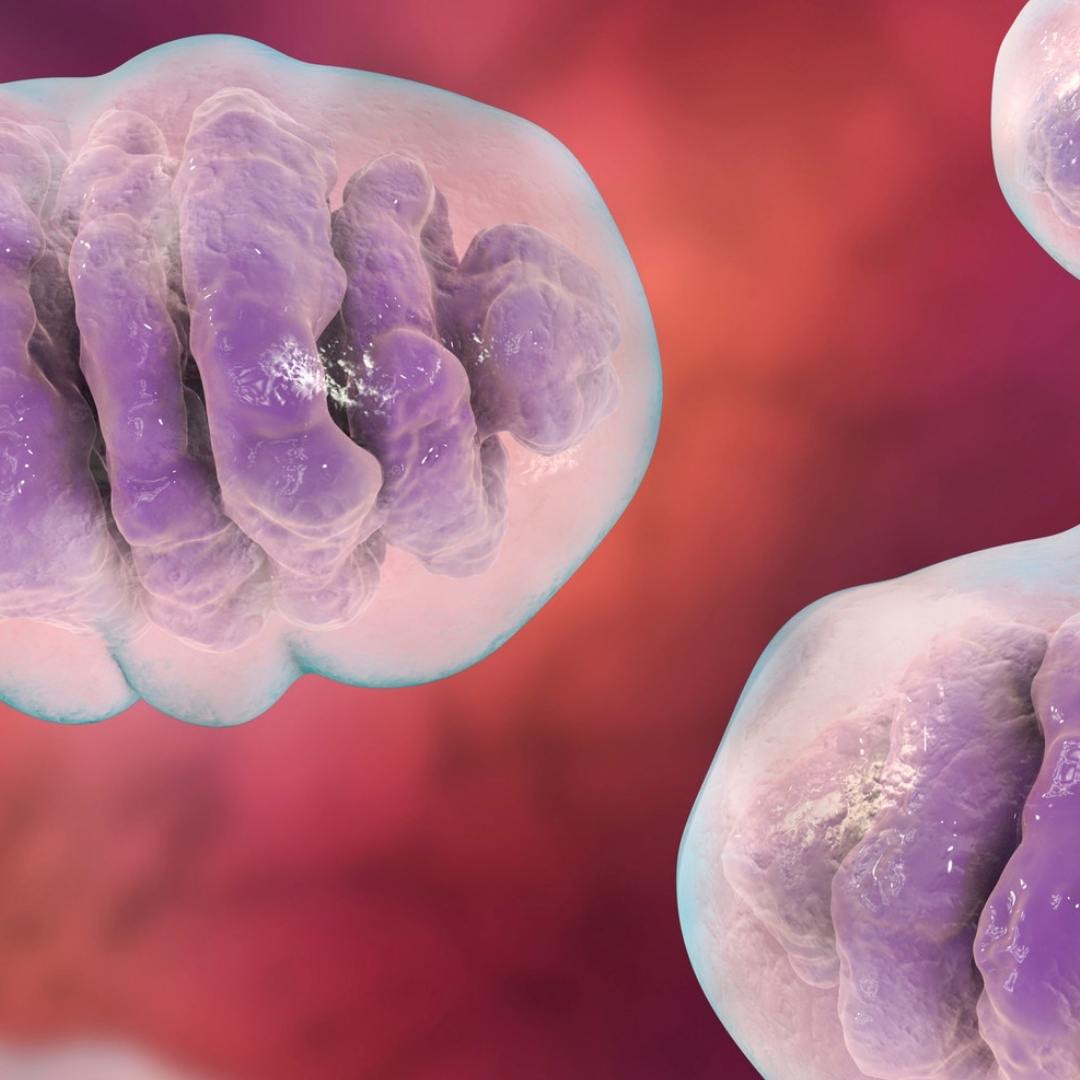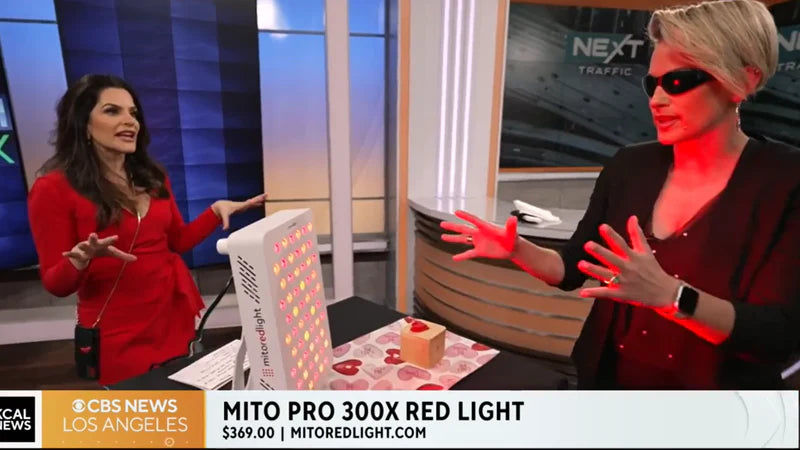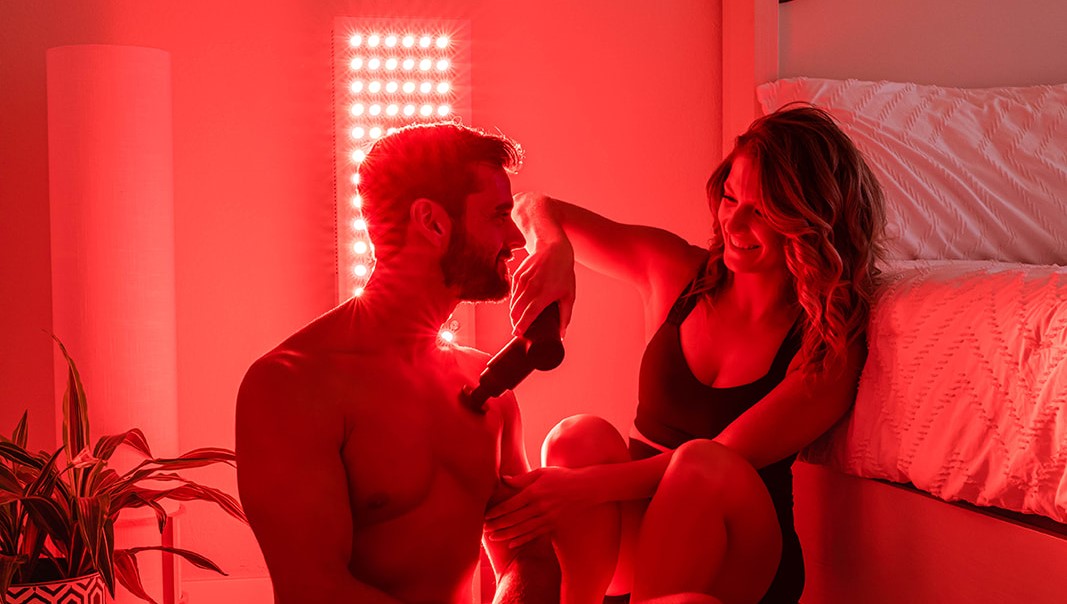Red light therapy for hair loss, also called low-level laser therapy (LLLT), is a noninvasive, drug-free alternative to minoxidil and finasteride.
It uses red light in the 630-670 nm range to stimulate follicles and support growth, and is generally well tolerated. The red-light device market reached $361.5 million in 2024 and is projected to grow about 9% annually through 2031, reflecting rising consumer confidence.
LLLT is most effective when started early, as it can slow hair loss progression and help revive miniaturized follicles. At Mito Red Light, our multi-wavelength panels and comprehensive resources aim to deliver consistent, measurable results for hair restoration.
How Can Red Light Therapy Help Stimulate Hair Growth?
Red light therapy supports hair growth through three main mechanisms that work together to enhance results when used consistently.
These include increasing cellular energy production thanks to ATP synthesis, improving scalp circulation for better nutrient delivery, and potentially extending the anagen phase of the hair growth cycle.
ATP and Cytochrome C Oxidase Activation
Light in the 630-670 nm range can penetrate scalp tissue, activating cytochrome c oxidase, the terminal enzyme in the mitochondrial respiratory chain that converts oxygen to cellular energy.
This processhelps boost ATP production in follicular cells, enhancing energy reserves for metabolic functions. Increased ATP availability helps follicles maintain growth cycles.
Blood Flow Boost and Follicle Revitalization
Support for local circulation is another pathway through which red light therapy may support hair growth. The treatment stimulates nitric oxide signaling, contributing to vasodilation and enhanced blood flow to the scalp. This increase can help deliver essential nutrients and oxygen directly to hair follicles during growth phases.
Research on dual-wavelength LED systems indicates these devices may engage nitric oxide pathways, potentially affecting DHT production, though further research is needed.
Extending the Anagen Phase
Red light therapy can help keep hair in its active growth stage longer, so that it grows fuller before resting. Most people start to notice changes around 12 weeks, with the best results showing up between four and six months when you stick with it.
Clinical trials show thatcompliant patients have 21 more hairs per cm² than placebo groups after 16 weeks, demonstrating quantifiable density improvements.
Differentiating Red vs. Near-Infrared Effects
Most hair-focused studies look at red light in the 630-670 nm range, so that’s the band you’ll see referenced most often in the research. It’s easy to mix up general red-light panels with devices designed specifically for hair applications, but they’re not the same thing.
Knowing the difference (and choosing a device that lines up with the best-studied wavelengths) helps set realistic expectations and makes picking the right option much simpler.
2025 Breakthroughs in Wavelength and Device Technology
Recent advances in red light therapy technology focus on targeted wavelength combinations that activate multiple cellular pathways simultaneously and user-friendly features that enhance treatment adherence.
ESPEO™ Quad-Wavelength Technology
At Mito Red Light, our ESPEO™ technology combines multiple wavelength peaks to support various cellular pathways, including the established 630-670 nm range that research shows stimulates hair follicle activity.
This aligns with evidence thatdual-wavelength LED systems engage multiple pathways for well-rounded cellular support.
Clinical Data on Near-Infrared
Current evidence for hair-specific applications remains strongest within the 630-670 nm range, and claims about near-infrared wavelengths need careful evaluation.
Hair-specific clinical validation focuses on red wavelengths rather than extending to the 830/850 nm near-infrared spectrum without solid trial data. While red light therapy beds offer various wavelength options, we focus on documented capabilities in hair applications.
How To Choose the Right Red Light Therapy Device for Your Scalp
Picking a home device comes down to safety, the right wavelengths, the device style, and features you’ll actually use. Look for regulatory clearance, specs that match clinical evidence, and a design that fits your daily routine.
FDA Clearance
FDA clearance provides regulatory validation of safety and performance claims for LLLT devices, though it's essential to understand its scope.Consumer data shows FDA-cleared devices command higher ratings, reflecting trust in regulatory oversight.
Key Specs
Choose devices in the 630-670 nm red-light range since that’s the band most studied for hair. Check the irradiance (mW/cm²) at the distance you’ll actually use it, so you can keep your dose consistent.
Match the treatment area to your goals: full-scalp coverage for diffuse thinning, targeted tools for small spots. Dual-wavelength devices can also help by activating more than one cellular pathway.
Form Factors
Red light therapy devices are available in a range of forms, each of which has its own advantages.
|
Device Type |
Advantages |
Considerations |
Best For |
|
Versatile for full-body use, customizable intensities and durations, can integrate with wellness routines |
Requires setup, may need treatment stands |
Users seeking multi-purpose devices and flexible positioning |
|
|
Caps/ Helmets |
Hands-free, scalp-conforming coverage, strong adherence support, available from affordable to premium FDA-cleared options |
Limited to scalp treatment, sizing considerations |
Dedicated hair treatment with maximum convenience |
|
Handhelds/Combs |
Targeted coverage, portable, features like massage teeth and waterproofing |
Requires manual operation, treatment time varies |
Spot treatment and users preferring active control |
Mito Red Light's Quality Guarantees
We build for reliability from the inside out, using automated PCB assembly and thorough device testing and certification.
We publish transparent specs like wavelength and irradiance so you can dose confidently, and we offer clear how-to guidance. Our multi-wavelength ESPEO™ approach is designed to cover the therapeutic red/NIR bands referenced across our site.
Proven Protocols: Dosing, Timing, and Consistency
Success with red light therapy for hair loss relies on maintaining consistent treatment schedules over several months. The following guidelines emphasize adherence and outcomes based on documented usage patterns.
Session Length and Frequency
Aim for three to five sessions a week and stick with it for three to six months before you reassess. Most people notice changes by around 12 weeks, with the best results showing up between months four and six.
Combining With Other Approaches
Red light therapy works best when it’s used as part of a broader, coordinated plan. Topical treatments, supplements, and other approaches may be recommended by your physician alongside red light therapy.
Emerging research on nitric oxide signaling and DHT modulation with dual-LED systems supports multimodal care, but responses differ, so personalized comprehensive plans should be guided by licensed healthcare providers.
The Bottom Line
Red light therapy is a well-studied, low-effort tool you can add to your hair-growth game plan. Using red wavelengths in the 630-670 nm range, LLLT helps nudge follicles to stay in their growth phase longer and supports scalp health with a generally gentle safety profile.
The key is consistency: most people do best with three to five sessions per week and give it three to six months before judging results. Early changes often show up around the 12-week mark, with bigger improvements between months four and six. You’ll get the most from it when it’s part of a broader routine, ideally with guidance from a qualified provider.
Whatever your needs are, Mito Red Light makes it easy to find a device that fits your routine. Take a look at our lineup today.
DISCLAIMER : Mito Red Light devices are Class II wellness devices aimed at affecting the body through supporting cellular function. The information provided in this article and on this site is for educational purposes only and is not intended to imply effectiveness of Mito Red Light devices for any specific application. The information provided in this article and on this site is not intended to diagnose, treat, cure, or prevent any disease, is not a substitute for consultation with a licensed medical provider and should not be construed as medical advice. Click here to read our article on potential contraindications of red light therapy.
FAQs
How long before I see visible hair growth?
Most people notice early changes around 12 weeks, with fuller improvements appearing at four to six months with consistent sessions. This timeline aligns with the natural hair growth cycle, which requires sustained support for visible density and quality improvements.
Can I use red light therapy on a completely bald area?
Red light therapy is most effective on thinning areas with active follicles and may not benefit completely bald regions where follicles are dormant. The treatment supports existing activity rather than regenerating inactive follicles.
What if my scalp is sensitive or I have a skin condition?
Start with shorter sessions and greater distance from the scalp, gradually increasing exposure. Consult your dermatologist if you have active scalp conditions, as some may require medical management before initiating light therapy.
How do I ensure my device delivers the correct dose?
Use the same distance each session, tracking irradiance (mW/cm²) and treatment time to calculate energy dose (J/cm²). Consistent positioning and logging settings ensure repeatability, as dose consistency supports reliable outcomes documented in research.
Can I combine red light therapy with other medications?
Yes, many users successfully pair red light therapy with treatments like minoxidil, as they work through different mechanisms. Discuss any combination treatment plan with your healthcare provider for safety and optimization.
Sources:
The Use of Light‐Based Therapies in the Treatment of Alopecia | PMC
Red Light Therapy Cap Top Sellers: 2025 Best Picks | Accio
